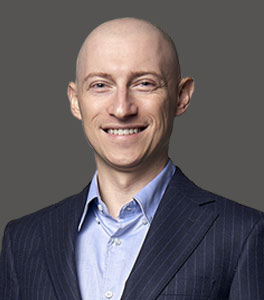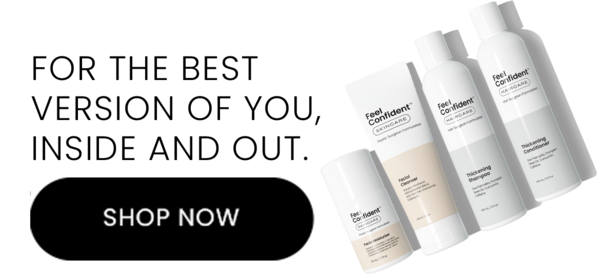

Revision rhinoplasty is a surgical procedure that revises or corrects a primary nose job. The revision procedure is much more complicated than the primary rhinoplasty. It requires a sophisticated understanding of the nasal structure and expert surgical technique, which the best-in-class nose plastic surgeon in New York City Dr. Linkov possesses.


City Facial Plastics, located in Manhattan, NYC, has an enormous history of performing rhinoplasty with phenomenal results. When needed, we can also repair a previous nose job through a rhinoplasty revision procedure to help our patients finally enjoy the benefits of a beautiful, functional nose.
Select a Section To Jump To …
Secondary rhinoplasty is a surgical procedure aimed at rectifying any deformities or abnormalities because of a botched primary rhinoplasty. It is a highly delicate procedure that requires a facial plastic surgeon to possess exceptional surgical skills, precision, experience, and expertise.
Prior to committing to surgery, Dr. Linkov always ensures your goals for surgery can be met. Only then can he enact the successful and natural outcomes he has always been known for. Dr. Linkov spends enough time with every patient, examining your anatomy, medical history, and the results of a primary procedure.
Patients seeking revision rhinoplasty in NYC are apprehensive. They have already undergone a complex facial procedure and have been disappointed with its outcomes. Therefore, Dr. Gary Linkov is especially attuned to the needs of these patients. His skillful job has attracted international intention and has made him arguably the best surgeon in New York and across the United States.
People seek out rhinoplasty surgery to improve their nose, assuming it will be the only procedure on their nose. But sometimes, a person might find that the rhinoplasty results do not meet their cosmetic needs. They might still have breathing problems afterward, or even new breathing problems.
Often, these problems are an overly reductive initial rhinoplasty that took too much supportive tissue away, leaving the potential for many problems behind. People unhappy with the results of their first rhinoplasty will sometimes seek out rhinoplasty tip revision, either with the same surgeon or with a different surgeon.
Your health and safety are the top priorities for City Facial Plastics. Hence, your medical history will be thoroughly examined to determine if revision rhinoplasty in New York will be safe for you. You are the right candidate if:
If your initial rhinoplasty surgery did not produce the desired results, you do not have to live with it for the rest of your life. Fortunately, you have access to the service of Dr. Linkov who has the experience and competence to painstakingly correct the work of less skillful surgeons.
Thanks to the meticulous planning and precise surgical methods of Dr. Linkov, you can expect a swift and healthy recovery. To instill confidence and relief, Manhattan revision rhinoplasty patients are typically given a frank, educational roadmap of the recovery process.
Recovery from a revision rhinoplasty can be divided into time from surgery, such as:
Dr. Gary Linkov cares for every patient. Hence, he is always on hand to support and guide you throughout recovery. Only by strictly following your surgeon’s recommendations can you enjoy all the benefits the best New York revision rhinoplasty has to offer.
Dr Linkov performed surgery on my nose in December 2019. His professional demeanor, highly skilled, confident, and detailed knowledge of such a demanding precision craft left me in a state of awesomeness! I trust this Gentle Doctor and highly recommend him to anyone considering any of the services that his practice provides!
HORACE DAILEY
Dr. Gary Linkov performs every procedure under the most stringent safety protocols to guarantee patient safety. Even though all the necessary precautions are taken to avert possible complications, any surgical intervention still carries risks. Before surgery, Dr. Linkov will inform you about the potential risks.
Some of the most specific risks and complications of a secondary nose job include:
Dr. Linkov always encourages his patients to voice their deepest concerns and questions before surgery. Rhinoplasty revision surgery is a highly delicate procedure that requires strong cooperation between a patient and a surgeon.
Choosing the right surgeon has always been of the utmost importance. Given the complex 3-dimensional anatomy of the nose and the psychological effect this procedure has on a patient, revision rhinoplasty is deemed one of the most challenging surgeries a facial plastic surgeon performs. Dr. Linkov is an ideal specialist who can address all the abnormalities that could arise from a poorly-performed primary rhinoplasty.
Dr. Linkov is proud to be among the leading NYC revision rhinoplasty surgeons who has extensive experience treating all conditions of the nose. He is the Chief of Otolaryngology and Facial Plastic Surgery for the Veterans Hospital in Brooklyn, NY, where he operates on complex nasal deformities on our country’s veterans.
In Manhattan’s Upper East Side, Dr. Linkov’s private practice focuses on cosmetic and functional rhinoplasty. Are you still doubting? You can view before and after photos of Dr. Linkov’s patients below.
Frequently Asked Questions
A successful nose job should look natural and blend with the rest of the facial features. When rhinoplasty is overdone, poor techniques are used, or healing does not go as planned, the results are often noticeable.
Some of the common complaints from poor nose job recipients include:
After your primary rhinoplasty, it is best to wait a whole year before planning for revision rhinoplasty. Sometimes a decision can be made a few months earlier, such as at ten months, but that is case-by-case. Waiting this long before having a tip revision rhinoplasty is that the swelling, especially at the nasal tip, can take many months to improve.
Surgery done too soon may be unnecessary. Also, it is best to allow the tissue to heal before retraumatizing it, and tissue planes may be more challenging to find and dissect if revision surgery is done sooner. Board-certified plastic surgeon in Midtown, Manhattan Dr.Linkov will walk you through the most appropriate timing for your procedure.
Whether a revision nose is worth it, the added downtime, risk, and expense depend on many factors. The revision rhinoplasty specialist should be able to explain to you what may have gone wrong during the first surgery and have a concrete plan on how to fix these issues. On the other hand, the patient needs to have a specific idea of what they want to have corrected and understand the challenges of, and the extended recovery for, a revision rhinoplasty.
There are two scenarios to consider. The first is that a surgeon performs rhinoplasty, and the patient is unhappy with the result. If that surgeon and patient decide to pursue a revision rhinoplasty, they must decide the cost. Often, the surgeon’s fee is waived for these types of cases, but anesthesia and facility costs may apply.
Another factor to consider for the first scenario is how long after the primary rhinoplasty is the revision requested. If a patient returns after five years requesting a revision nose job it may be a different financial situation compared to stating disappointment and requesting a revision after a few months.
The second scenario is if a patient, who has previously had a rhinoplasty elsewhere, comes to a surgeon seeking a revision procedure (secondary rhinoplasty). In this scenario, the surgery will often cost more than primary rhinoplasty because of the complexities described above. Keep in mind that every surgeon approaches their revision rhinoplasty fees differently.
While rhinoplasty revision is complicated, Dr. Linkov, as a top-rated revision rhinoplasty surgeon in New York City, has the experience and skills to help patients unhappy with their previous nose job results. If you want to explore secondary rhinoplasty, contact City Facial Plastics in UES, Manhattan, to schedule an appointment with Dr. Linkov.
Dr Linkov performed surgery on my nose in December 2019. His professional demeanor, highly skilled, confident, and detailed knowledge of such a demanding precision craft left me in a state of awesomeness! I trust this Gentle Doctor and highly recommend him to anyone considering any of the services that his practice provides!
HORACE DAILEY

Dr. Linkov is a double board-certified by the American Academy of Facial Plastic and Reconstructive Surgery and the American Board of Otolaryngology-Head & Neck Surgery. A native of New York, Dr. Linkov graduated as a salutatorian from Cornell University and received his Medical Degree at Columbia University College of Physicians and Surgeons. Dr. Linkov conducted advanced head and neck cancer research at the world-renowned Memorial Sloan Kettering Cancer Center. Dr. Linkov is a former Adjunct Assistant Professor at New York University (NYU), where he taught Rhinoplasty.
Dr. Linkov is a top-rated facial plastic surgeon in New York who specializes in lip lift, facelift, rhinoplasty, and hair transplant. He has been named one of the top 5 lip lift surgeons in the United States, is listed in the prestigious SuperDoctors New York™ registry, and has appeared on the Dr. Oz Show, where he discussed the state-of-the-art hair transplantation procedure.


City Facial Plastics 150 E 56th St, #1AB, New York, NY 10022 (212) 439-5177